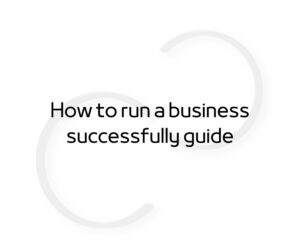I think you are interested in strategy for innovation. Right? Companies that successfully leverage this not only survive but flourish. But what exactly forms an effective innovation strategy, and how can you create one that propels your organization towards innovative products, sustainable growth, and enduring success?+
Innovation is the ability to see change as an opportunity – not a threat.
Steve Jobs

What is an innovation strategy
Let’s start with what strategy for innovation is. By the definition of innovation strategy – it’s a roadmap, guiding an organization toward creating new and valuable offerings that address customer needs and propel business forward. It represents vision, objectives, methods, and metrics for unleashing creative potential and turning ideas into successful realities.
An eye on innovation in business
So, innovation in business is about creating novel and valuable offerings that address customer needs and drive business growth.
It involves introducing new products, services, processes, or business models that:
- Solve real problems for customers.
- Offer unique value compared to existing solutions.
- Leverage technology in creative ways.
- Prioritize user experience for smooth adoption.
- Adapt based on market trends and feedback.
Importance of innovation strategy
The benefits of a well-defined innovation strategy are numerous:
- Stay ahead by anticipating and responding to evolving market trends and customer demands.
- Drive increased revenue, market share, and brand recognition through successful new products and services.
- Develop better processes and solutions that optimize resources and streamline operations.
- Foster a culture of creativity and innovation, attracting and retaining top talent who thrive in dynamic environments.
Examples of innovation strategies
Tesla
- Key elements: Bold risk-taking (Cybertruck), open innovation (acquiring Maxwell Technologies), customer-centric design (minimalist interiors).
- Outcomes: Market leadership in electric vehicles, redefined consumer expectations for car technology and sustainability.
Amazon
- Key elements: Constant experimentation (Fire Phone failure), data-driven decision making, focus on disrupting traditional models (Amazon Web Services).
- Outcomes: Diversified business model, redefined online retail experience, dominant player in cloud computing and AI.
Apple
- Key elements: User-centric design (iPhone), vertical integration, secrecy, and control over the product ecosystem.
- Outcomes: Premium brand image, loyal customer base, high margins and profitability, consistent innovation in design and technology (Touch ID, Face ID, and the Apple Watch).
Netflix:
- Key elements: Data-driven content recommendations, pivot to streaming, original productions (Stranger Things).
- Outcomes: Expanded globally and disrupted traditional media models, and subscriber growth, and redefined how audiences consume content.
Airbnb
- Key elements: Peer-to-peer model, technology platform, focus on unique experiences and personalization.
- Outcomes: Disrupted hospitality industry, new travel options for consumers, and economic opportunities for hosts.
SpaceX
- Key elements: Bold goals and vision (Mars colonization), reusable rockets, internal talent development.
- Outcomes: Reduced space launch costs, technological advancements, and inspiration for future generations.
Alibaba
- Key elements: Data-driven insights, personalized user experience, expansion into rural markets.
- Outcomes: Market leadership in Chinese e-commerce, a diversified ecosystem of services, bridging the digital divide.

A look at the innovative product development
Taking an idea from conception to market launch involves a journey through the innovation and product development process. Here’s a breakdown of the key steps:
- Identify unmet needs, brainstorm solutions, and validate your concept through user research and prototyping.
- Refine your concept, build functional prototypes, and gather user feedback to iterate and improve.
- Secure funding, develop your go-to-market strategy, and conduct pilot launches to refine your approach.
- Introduce your product, track its performance, adapt based on market response, and continuously innovate.
Key ingredients of an innovative product
In today’s marketplace, product innovation is not just a nice-to-have, it’s a survival imperative. Here’s why:
- Solves a real problem
Addresses a significant need or pain point for its target audience.
- Offers a unique value proposition
Stands out from existing solutions through novel features, functionality, or design.
- Leverages technology
Integrates cutting-edge tech or utilizes existing tech in new and creative ways.
- Prioritizes user experience
Offers intuitive design, ease of use, and a seamless user journey.
- Focuses on sustainability
Minimizes environmental impact throughout its lifecycle.
- Fosters community
Connects users and creates a sense of belonging.
- Adapts and evolves
Responds to changing needs and trends through continuous improvement.
Tips & best practices for product development
Let’s see some best ideas regarding product development:
1. Ideation & exploration
- Use techniques like Mind Mapping, SCAMPER, or role-playing to spark diverse ideas.
- Conduct customer interviews and surveys, analyze user reviews of competitor products, and observe real-world behavior to understand pain points and unmet needs.
- Analyze what your competitors are doing well and identify areas for differentiation.
- Don’t invest heavily before initial validation. Use Minimum Viable Products (MVPs) and rapid prototyping to get early feedback and test assumptions.
2. Development & prototyping
- Begin with rough prototypes like paper mockups or cardboard models to quickly test core concepts and get user feedback.
- Prototype early and often, incorporating feedback at each stage to refine your design and functionality.
- Test prototypes with people who represent your target audience, but also include individuals with different backgrounds and perspectives.
- Explore free or low-cost prototyping tools like Figma, InVision, or Tinkercad to build interactive prototypes without requiring coding expertise.
3. Pre-launch & optimization
- Clearly define your target market, revenue streams, cost structure, and projected profitability.
- Identify the best channels to reach your target audience, develop appropriate messaging, and set realistic marketing goals.
- Run a pilot program in a limited market or timeframe to gather valuable feedback and refine your product and marketing approach before a wider launch.
- Ensure your product complies with all relevant laws and regulations before launch.

Examples of innovative products
- Apple iPhone – pioneered the modern smartphone with a user-friendly touchscreen interface.
- Airbnb – disrupted the hospitality industry by enabling peer-to-peer accommodation rentals.
- Tesla Model S – led the electric vehicle revolution with high-performance and sustainable features.
- Amazon Alexa – introduced a voice-activated virtual assistant, transforming human-computer interaction.
Developing your innovation strategy
To fuel your innovation engine, explore various innovation strategy methods and techniques:
- Brainstorming
Generate a multitude of ideas through techniques like mind mapping or SCAMPER.
- Design thinking
Empathize with users, define problems, prototype solutions, and iterate based on feedback.
- Open innovation
Collaborate with external partners like startups, universities, or even competitors.
- Lean startup
Develop minimum viable products (MVPs) and gather early feedback for rapid iteration.
- Crowdsourcing
Leverage the collective intelligence of a wider audience to generate ideas or solve specific problems.
Innovation strategy step-by-step:
- Understand your company’s strengths, weaknesses, external trends, and target audience.
- Establish clear objectives, target audience, and success metrics for your innovation efforts.
- Choose relevant methods, assemble a diverse team, and foster an innovation-friendly culture.
- Generate ideas, select and refine the most promising ones, and test them through prototyping.
- Implement your chosen project, track progress, adapt based on learnings
- Track your progress and analyze, then adapt based on learnings.

Conclusion: Strategy for innovation time
Remember, executing a strategy for innovation is a constant journey. You need to follow and adapt to an ever-changing and demanding marketplace. By continually seeking new ideas, embracing experimentation, and learning from both successes and failures, you can ensure your company remains at the forefront of change.
FAQ: Strategy for innovation time
Q1: What is innovation strategy?
It’s a roadmap guiding organizations to create new and valuable offerings, addressing customer needs, and driving the business forward.
Q2: Can you provide examples of innovation strategies?
Examples include Tesla’s bold risk-taking, Amazon’s constant experimentation, and Apple’s user-centric design.
Q3: How do you develop an innovation strategy?
Explore various methods like brainstorming, design thinking, open innovation, lean startup, and crowdsourcing.
Q4: What are the key steps in innovative product development?
Identify needs, validate concepts, secure funding, launch, and continuously innovate based on market response.
Q5: What are some tips for product development?
Use techniques like ideation, development, and pre-launch optimization, and ensure compliance with relevant regulations.
I’m here to help, so if you have questions – here is the contact page.
If you need more insights check my X (Twitter)!





Innovation in business is inevitable like Thanos 😀
That’s right (finger snap)!
Hello, I saw your site by accident and I think there are too many good ideas here!
Thanks! I’m glad you like it! Feel free to stay!